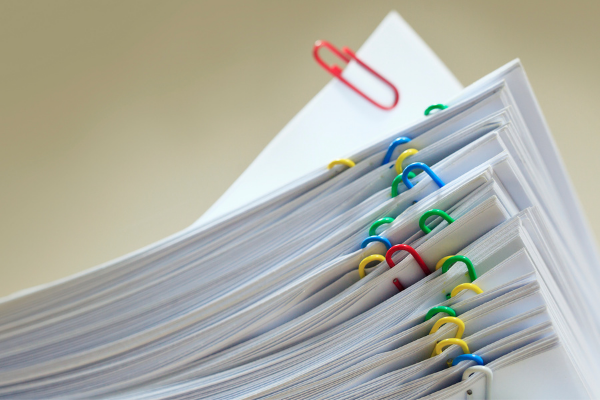A land title is important in allowing the public to know that you legally own a piece of property. Whether you're buying a home or just a piece of land, full ownership entails the transfer of land title in the Philippines.
Not only are property buyers required to understand this process. Property agents and property sellers should also be familiar with the process of transferring the title from the previous owner to the new one.
If you're a property buyer, make it clear with the property seller and with the broker or agent who should process the transfer of the land title. But if you want to process it yourself, then you should know the intricacies of the procedure and how to accomplish it as required by law.
Let’s walk you through the entire land transfer process so you can address whatever hassles may be waiting for you along the way.
What is a Land Title and Why is It Important?
A land title is a legal document that represents a person’s ownership of a property. The main reason you should transfer land title in the Philippines is to protect your rights as an owner. Moreover, it’s to allow you to facilitate the building of a structure or any other transactions involving the piece of land and use the title as collateral for loans and other bank transactions.
According to the law, a title, once registered, cannot be defeated even by adverse, open, and notorious possession.[1] It’s issued as absolute proof of ownership of the property by the person whose name appears on it. Therefore, certificates of title are considered binding and conclusive.
Thus, even when someone claims to be the owner of the property because they’ve been living there for years, they can’t be legally considered as the property owner without a title under their name.
Read more: Upfront and Hidden Home Ownership Costs You Need to Prepare For
What’s the Difference Between a Land Title and a Deed of Sale?

A deed of sale and a land title are two entirely different things. A deed of sale is a proof of transaction between the property owner and the property buyer. Furthermore, a notarized and signed deed signifies that both parties have fulfilled their obligations to process the sale.
The Bureau of Internal Revenue requires the deed of sale to process tax payments and transfer a land title in the Philippines.
Once you accomplish the deed of sale, the buyer can start processing the transfer of the property’s ownership to their name.
How Much Does it Cost to Transfer a Land Title in the Philippines?
As a rule, the full cost of transfer of a land title in the Philippines[2] to the name of the new owner depends on the property’s market value or the price indicated in the deed of sale.
Although taxes may be the same wherever you are in the country, some fees may vary depending on the local government where the property belongs. To give you an idea of how much it costs to transfer a land title in the Philippines, here’s a summary of the taxes and fees.
| Fees and Taxes | Definition | Who Pays |
|---|---|---|
| Capital gains tax | 6% of the property's selling price as indicated in the Deed of Sale or the zonal value, or whichever is higher | Seller |
| Documentary stamp | 1.5% of the property's selling price as indicated in the Deed of Sale or the zonal value, or whichever is higher | Buyer |
Withholding tax | Applied to properties owned by corporations | Seller |
| Any unpaid taxes | Any missed tax payments that are already due | Seller |
| Transfer tax | Paid to the local Treasury's Office and refers to the imposed tax at a rate of 50% of 1% or 75% of 1% (in Metro Manila) of a property's worth | Buyer |
| Registration fee | 0.25% of the property's zonal value or selling price, or fair market value, depending on which is higher | Seller |
| Commission of the agent or broker | Commission refers to any payments in exchange of an agent or broker's assistance during the transfer of land title in the Philippines | Seller |
| Incidental and miscellaneous fees | May refer to other fees incurred during the registration process including registration fees and notary fees | Buyer |
Although it’s been indicated who pays for the fees mentioned above, there’s no legal standard assigning the buyer or seller to pay for the specified charges. The property buyer and the property seller can negotiate and make arrangements on who pays what during the land title transfer process.
What are the Transfer of Title Requirements and Steps?

Property buyers should know that once the deed of sale is signed and notarized, the deadline to transfer the land title in the Philippines starts running. The buyer should've already made arrangements with the seller and the broker to facilitate the transfer of title process.
Step 1: Prepare the Requirements for Transfer of Title
Make sure you have the original copy and at least two photocopies of the following:
- Notarized Deed of Sale
- Tax Identification Number and ID of the buyer and the seller
- Transfer Certificate of Title for a house or a lot
- Condominium Certificate of Title (for condominiums)
- Tax Clearance
- Tax Declaration
- Real Property Tax for the current year
- Management certificate from the condominium admin
- Certificate of non tenancy from the condominium admin
- Photo of the property for sale
- Sworn Declaration of No Improvements to show that the sold property hasn’t incurred any improvements
- Special Power of Attorney (SPA) if the person signing is not the owner indicated in the Deed of Sale
- Certificate of the Philippine Consulate if the SPA was executed abroad
- Marriage Certificate, Birth Certificate, and Certificate of No Marriage
- Vicinity map or location map of the property
- Other documents required by the Register of Deeds, like consolidation of ownership or mortgage settlement
Step 2: Submit all the Required Documents for Tax Computation

Once the deed of sale is signed and notarized, you need to submit it to the Regional Office of the Bureau of Internal Revenue covering the jurisdiction of your property along with other required documents.
The BIR representative will evaluate your documents and start computing for the Capital Gains Tax [3] (CGT-BIR Form 1706) or Creditable Withholding Tax (CWT-BIR FORM 1606).
Take note that the Capital Gains Tax should be paid within 30 days from the date of notarization, and DST[4] should be paid on the nearest fifth day of the month after the notarization date. Make sure to comply to avoid penalties and fines.
Step 3: Pay the Required Taxes
You may now proceed to the Authorized Agent Bank (AAB) duly accredited by the BIR and pay the required Documentary Stamp Tax, Value Added Tax, and Capital Gains Tax.
Prepare the following documents which you might also need:
- The signed computation sheet from the BIR
- Deed of Conveyance - A document that indicates the transfer of ownership from the previous owner or seller to the buyer
- Three copies of duly filled out BIR Form 1706 for Capital Gains Tax signed by the seller
- Three copies of filled out BIR Form 2000-OT to pay for Documentary Stamp signed by the buyer
Step 4: Get a Certificate Authorizing Registration (CAR)
The Certificate of Authorizing Registration (CAR) is mandated by the National Internal Revenue Code. It’s a tax clearance document and proof that all taxes entailed with the sold property have been settled accordingly.
You can claim the CAR as scheduled along with these documents which should have already been stamped by the BIR:
- Deed of Sale - Original copy stamped received by the BIR
- Duplicate Copy of the CCT or TCT as received by the BIR
- Original copies of the Form 2000 (DST and the BIR Form 1706 CGT) stamped received by the BIR
- Tax Declaration for land and improvement
You’ll receive two copies of the CAR. The brown copy is for you to keep while the blue copy is for you to use during the transfer.
Step 5: Submit the CAR to the Local Treasurer’s Office
At this stage, you need to submit your CAR to the local Treasurer’s Office for the Transfer Tax. Make sure to pay the Transfer Tax within 60 days after the notarization of the Deed of Conveyance.
Upon payment, the Treasurer’s Office will provide you with a receipt as proof of payment of Transfer Tax. You’ll then need to go back to the BIR to have the Deed of Conveyance stamped.
After this stage, you should have the original Deed of Conveyance stamped marked and signed by both the BIR and the Treasurer’s Office.
Step 6: Submit the Documents to the Registry of Deeds for Registration
It’s now time to register your property. You can now proceed to the Registry of Deeds and submit the following:
- Deed of Conveyance
- Deed of Absolute Sale
- Copies of IDs of all signatories
- Official Receipt of Notary Public used to notarize the Deed of Sale
- Certified True Copy of the Original Land Title
- Tax Clearance
- Latest Tax Declaration
- Clearances from the Home Owners Association, if applicable
- Birth Certificate
- Certificate of No Marriage
- Marriage Certificate
Once you've submitted the required documents and paid for the registration fees, you usually need to wait for two weeks before you can acquire the new land title under your name.
Step 7: Secure a New Tax Declaration from the Local Assessor’s Office

With your new title acquired from the Registry of Deeds, you can now secure a New Tax Declaration Certificate from the Assessor’s Office. The new owner should pay all assessment fees under the new tax declaration.
Here are some documents you may need to submit:
- Original copy and photocopy of the new land title
- A copy of the old title named under the previous owner
- Deed of Conveyance
- Certified True Copy of the New Tax Declaration
- Business Tax Receipt or Business Permit, if the previous owner is a corporation
- Duplicate copy and photocopy of the Certificate Authorizing Registration (CAR) from the BIR
- Tax Clearance
- Photos of the property bought
Read more: Everything You Need to Know About Housing Loans in the Philippines
Transfer of Land Title in the Philippines FAQs
1. I’ve received the new land title under my name. What’s next?
You should keep the original copy and photocopies of your new title, your tax declaration, and the CAR (brown copy), plus all the receipts for all payments made in the transfer process. As this document is not very easy to secure, keep it in a secure place.
2. My new property is a condominium/located within a subdivision. What documents should I present for me to move in?

You should provide a copy of the Deed of Conveyance, the new title with your name as the owner, and the CAR.
3. What happens if I lose my land title and other supporting documents?
You should secure a new copy by undergoing the entire process again, which might cost you around ₱50,000 or more.
4. What is the e-Title by the Land Registration Authority?
The e-Title[5] is an electronic file of your original land title which allows you to access and retrieve it more easily. This also protects your title from tampering or destruction. More importantly, it provides timely detection and identification of fake land titles.
The conversion of physical land title copies into an electronic file is part of the Land Registration Authority’s Land Titling Computerization Project.
Read more home ownership articles from Moneymax here:
- Should You Buy or Build a House? Important Things to Consider
- Are You Financially Ready to Buy a House in the Philippines?
- Should You Buy or Rent a House? Know the Pros and Cons Before You Decide
Final Thoughts
Property ownership in the Philippines seems like a complicated process, but it just takes a little bit of patience to accomplish the transfer of titles properly. You need to have the right documents and be familiar with the responsible government agencies to make the entire process a lot more manageable.
Understanding the importance of legal documents, like a land title, will also allow you to maximize the benefits of property ownership. Let this guide on how to transfer a land title in the Philippines help you with that!

Sources:
- [1] Torrens Titleholder is entitled to possession (Manila Times, 2019)
- [2] Q&A: How Much Does It Cost to Transfer a Land Title in the Philippines? (Lamudi, 2017)
- [3] Capital Gains Tax
- [4] Documentary Stamp Tax
- [5] eTitle (Land Registration Authority, 2022)









